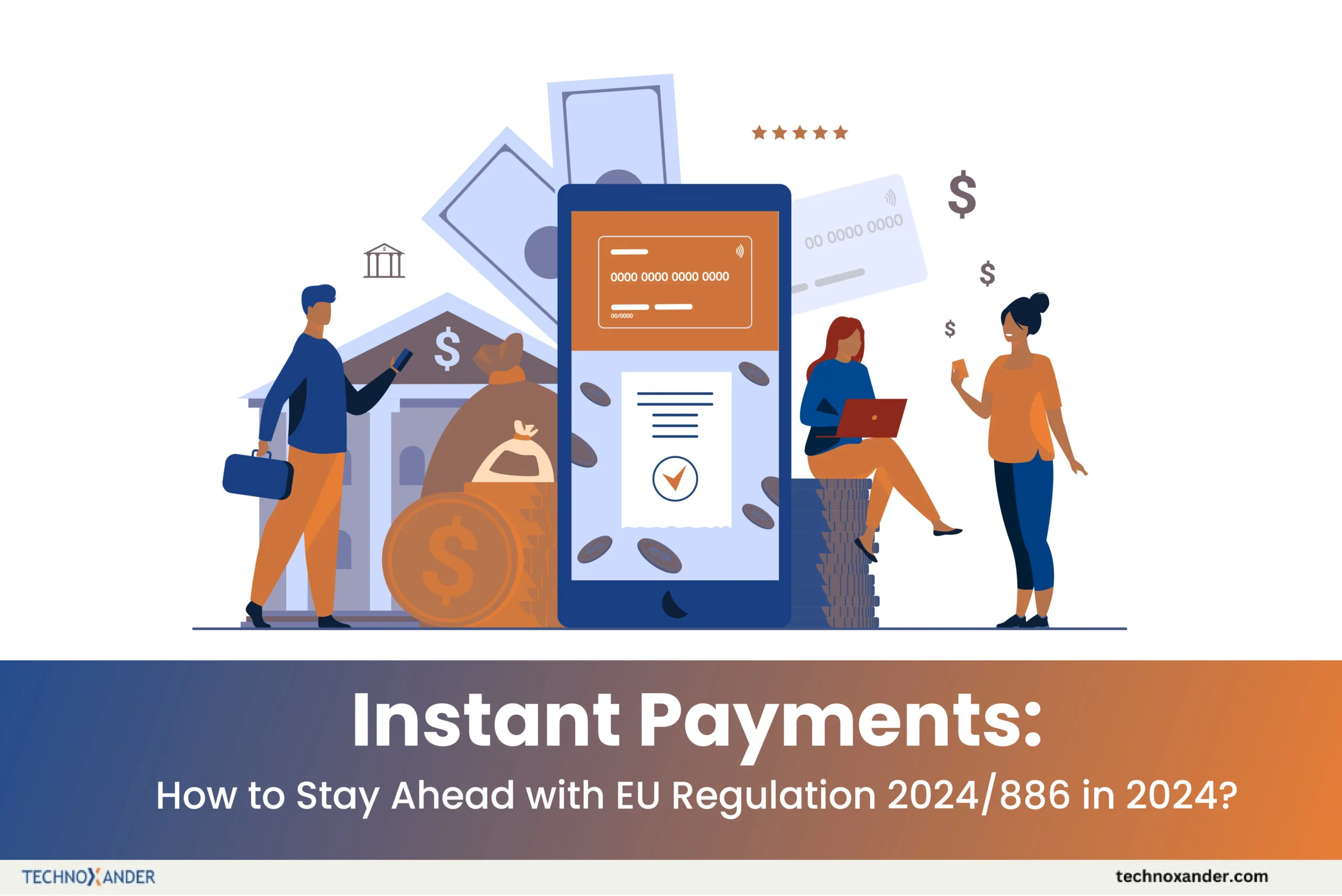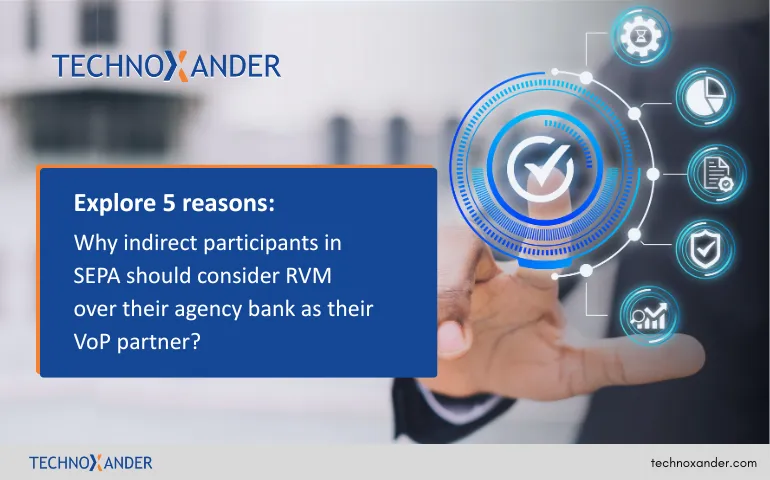Imagine your corporate customer’s business running smoothly, but your payment processing systems lagging behind, taking hours or even days to complete credit transfers. This delay is no longer just a minor inconvenience to the customer —it’s a critical risk.
The customers are now demanding transactions be completed in seconds, not days, to meet the growing expectations of both businesses and consumers. But the pace of adoption for Instant Payments in Europe has been painfully slow due to few institutions offering Instant Credit Transfers.
This increasing demand for real-time and instant payments in Europe has led to the introduction of EU Regulation 2024/886, which requires payment service providers (PSPs) to offer instant payments in Europe for euro-denominated transactions.
The challenge? Ensuring payments are processed securely, 24/7/365, without sacrificing operational resilience or exposing systems to heightened risks. Here you can see key points of this detailed guide below:
- EU Regulation 2024/886 mandates PSPs in Europe to enable instant euro payments 24/7/365.
- Delays in credit transfers now pose critical risks to customer experience and trust.
- Instant payments must be priced the same as standard transfers, encouraging adoption.
- Verification of Payee (VoP) is required to prevent fraud by matching IBAN and recipient names.
- Real-time sanctions screening is now mandatory before processing payments.
- Non-compliance could result in financial penalties and severe reputational damage.
- Robust infrastructure, VoP, and compliance tools are essential to meet these demands.
- PSPs embracing regulation will enhance customer satisfaction and lead innovation.
- Now is the time to prepare and future-proof payment operations.
- Explore how our VoP solution supports compliance and real-time payments efficiently.
Now, let’s break down how this regulation impacts your operations and what you can do to stay ahead of the curve.
Understanding Instant Payments
At its core, an instant payment is a real-time transaction that transfers funds from one account to another within seconds. This type of payment is credited immediately to the recipient’s account, regardless of the time of day or day of the week, ensuring that money moves quickly and efficiently through the financial ecosystem.
Key Features of EU Regulation 2024/886
The EU’s Regulation 2024/886, which mandates instant euro payments, introduces several key requirements for PSPs.
Let’s read into these components and the steps PSPs must take to comply.
1. Always On: Instant Payments 24/7/365
One of the most striking aspects of the regulation is the requirement for instant payments to be processed at any time, day or night. PSPs must be ready to handle transactions 24 hours a day, 365 days a year.
This means transactions, even those made on weekends or holidays, must be credited to the recipient’s account instantly without delays.This demand places immense pressure on existing payment infrastructures.
PSPs must invest in real-time payment processing systems that can ensure:
- Zero Downtime: System outages or delays, especially during high-traffic periods like holidays, could result in penalties and a loss of customer trust.
- Scalability: Payment infrastructures must be able to handle increasing volumes of transactions, especially as instant payments become more widespread.
2. Cost Parity Between Instant and Standard Payments
Another critical feature of the regulation is the requirement that instant payments must not cost more than traditional payments. This is designed to encourage widespread adoption by removing financial barriers for consumers and businesses.
For many PSPs, this will require a rethinking of their pricing strategies.
Offering instant payments at the same price as standard transfers could impact short-term revenues, but the long-term gain could be a more loyal customer base and increased market share. PSPs will need to balance compliance with profitability.
According to a 2022 report by The European Payments Council, instant payments accounted for 12% of all SEPA instant credit transfers. This number is expected to grow to 35% by 2026 as cost parity and regulations like 2024/886 take effect.
3. Verification of Payee (VoP): Fraud Prevention
With the rise of real-time payments comes the increased risk of fraud. To mitigate this, Regulation 2024/886 requires PSPs to verify the payee’s details, such as matching the International Bank Account Number (IBAN) with the recipient’s name, before processing any transaction.
This step is crucial in reducing instances of fraud and misdirected payments, but it must happen without slowing down the instant payment process.
Real-time verification tools, like Verification of Payee (VoP) systems, are essential for PSPs to remain compliant while ensuring the security of each transaction.
4. Sanctions Screening in Real Time
Sanctions screening is another cornerstone of Regulation 2024/886. PSPs must now screen against the latest EU sanctions lists before processing any payment, ensuring that sanctioned entities or individuals do not receive funds.
This real-time screening requirement differs from earlier regulations, which allowed for post-transaction monitoring.
For compliance teams, this means integrating automated sanctions screening tools capable of checking large volumes of transactions instantaneously.
5. The Stakes Are High: Penalties for Non-Compliance
Failure to comply with Regulation 2024/886 can result in hefty financial penalties for PSPs. However, the reputational risks may be even more significant.
With growing digital payments, customers expect their transactions to be fast, secure, and seamless. Any failure to deliver on this promise can damage trust and lead to customer attrition.
In 2023, a study by Accenture found that 62% of consumers would switch to a different payment provider if their current provider experienced a significant security breach.
Overcoming the Challenges: Building a Resilient Payment Ecosystem
At this point, you may be wondering, “How can we prepare for these changes and ensure compliance without disrupting our operations?” The answer lies in technology and preparation.
- Robust, scalable infrastructures to handle 24/7/365 payment processing.
- Real-time Verification of Payee checks and sanctions screening requirements.
- Advanced compliance tools to ensure adherence to evolving regulatory demands.
Conclusion
The shift to real-time payments is more than just a regulatory requirement; it’s a game-changing opportunity. By investing in the right technology, payment service providers (PSPs) can grow customer satisfaction, reduce fraud, and enhance operational resilience. Those who adapt will lead the way in the new age of instant payments.
Don’t get left behind—discover how our Verification of Payee (VoP) solution can transform your payment solutions today!










